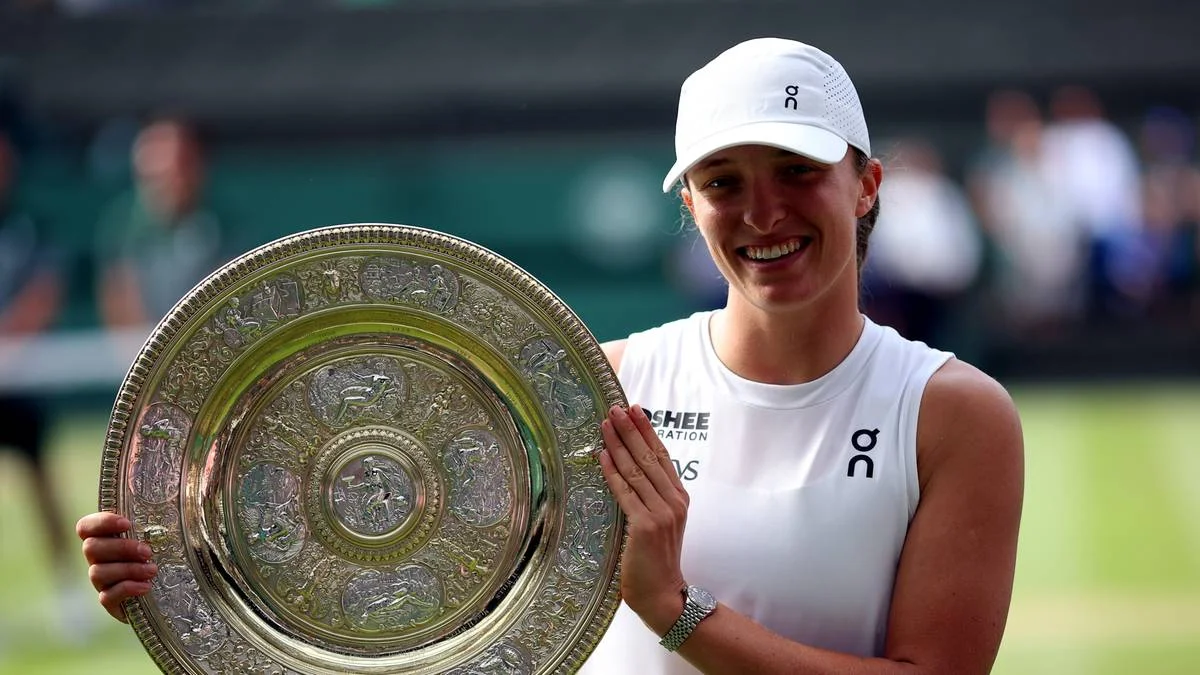Iga Swiatek came back on the winning track in the most impressive and unexpected way imaginable. The Pole ended her title drought, which began after winning Roland Garros in 2024, by capturing another Grand Slam title - this time on a surface that had not been especially kind to her throughout her career. Dominant throughout the entire fortnight, especially in the decisive stages of the tournament, Swiatek delivered what was arguably her best performance since her commanding 2022 season. Losing only her final game in the first set of the semifinal - and then serving three consecutive bagels to clinch the title - was a historic run to witness.
Friendship with grass regained
It’s not as though Swiatek had always struggled on grass. Just before stepping onto the professional stage and immediately becoming one of the most prominent faces on tour, Iga won the junior Grand Slam title right here at SW19, becoming the Wimbledon Girls’ champion in 2018. However, her senior-level attempts at Wimbledon had not been as bright. Two promising runs in 2021 and 2023 were interspersed with two more disappointing ones - particularly in 2022, when her loss to Alize Cornet in the third round unexpectedly ended her 37-match winning streak. Last year was also a letdown, with her best result so far being the quarterfinals in 2023.
This time, just like two years ago, Swiatek scheduled her grass-court season with one tournament before Wimbledon - the WTA 250 event in Bad Homburg. It proved to be a promising decision, already ending one of her droughts as she reached her first final since the aforementioned Roland Garros 2024.
Was it a real crisis?
Being the long-time WTA ranking leader, with five Grand Slam titles to her name before this year - and a phenomenal winning streak in 2022 - Swiatek has set the bar of expectations sky-high, both for herself and in media narratives, especially in Poland. The 2025 season up to this point was certainly far from perfect, but objectively, nowhere near terrible. Yes, Swiatek suffered some major upsets along the way - something that rarely happened to her before. Yes, several of her runs, even the promising ones like those in the Middle East in February, collapsed before reaching the final. She lost her dominance in places where she used to be almost unbeatable - Roland Garros, Stuttgart, and Doha, for instance. But there isn’t a single player on tour who would call a season with two Grand Slam semifinals and a top position in the WTA Race a “crisis” - perhaps with the exception of her biggest rival and current No. 1, Aryna Sabalenka.
However, this entire “crisis” narrative may have played an important role ahead of Wimbledon. Swiatek has always faced a certain kind of pressure - being in the spotlight with questions about whether she could finally deliver in London. But after a relatively rough start to the season, there was much less external pressure this time.
Fissette's goals
After last season, Swiatek made changes to her coaching staff - including the major decision to end her successful partnership with Tomasz Wiktorowski - and sought new impulses by teaming up with globally renowned superstar coach Wim Fissette. The Belgian coach brought a vision: to set goals both in terms of results and tennis development. Their shared ambition was to succeed on grass and make a deep run at Wimbledon. In interviews before the season, Fissette also expressed a desire to focus on specific aspects of Swiatek’s game - most notably, improving the efficiency of her serve and enhancing her second-serve performance.
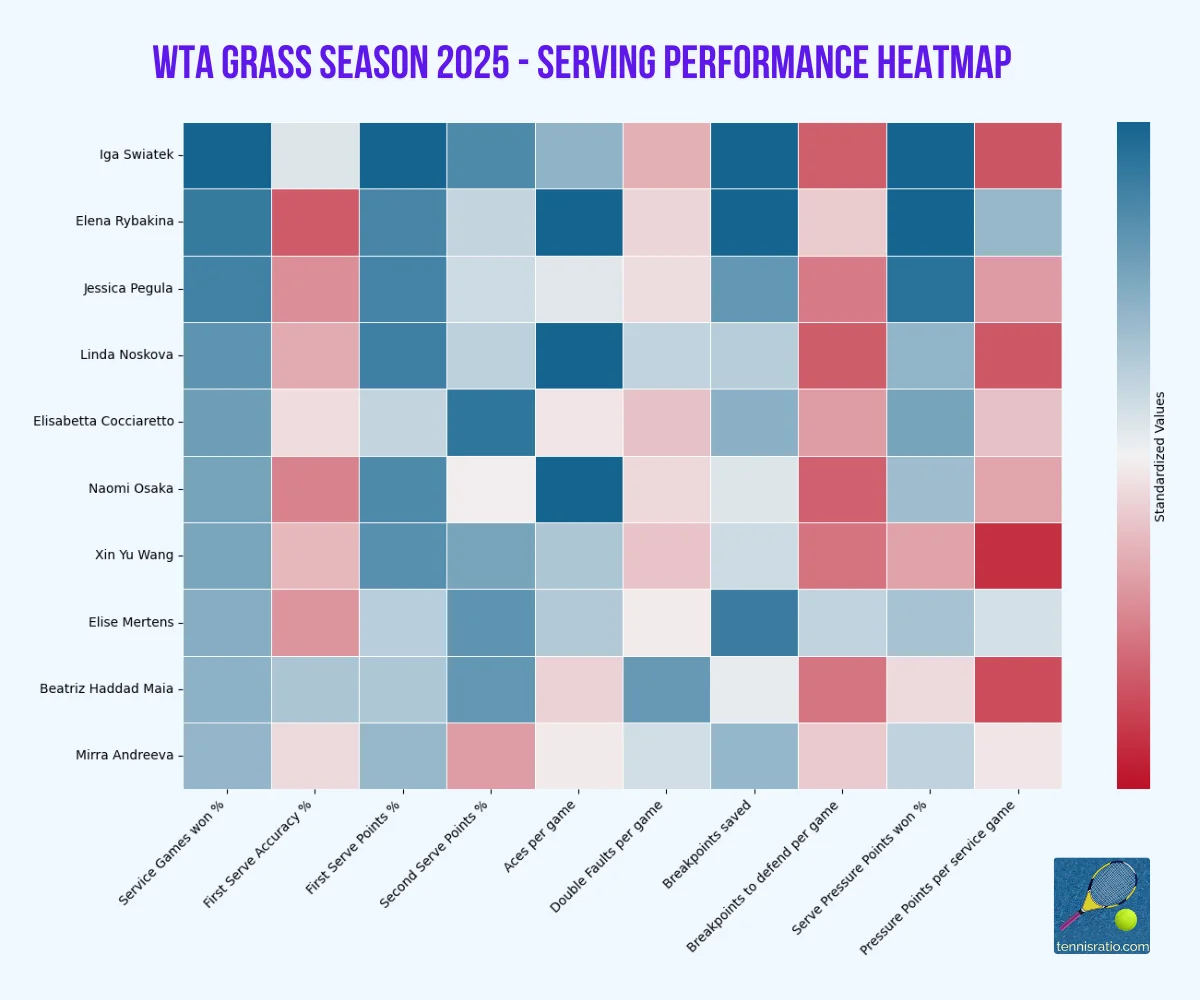
Despite disappointments earlier in the year, those goals appear to have been achieved emphatically. Swiatek was the most dominant and efficient player throughout the grass season. She won 88.5% of her service games - by far the best in the field. Winning 77% of points on her first serve was an excellent mark, as was her 53% success rate on second serves. The consistency of her second serve also enabled her to save 77% of break points and 70% of pressure points on serve. Looking at her serve performance heatmaps from this stretch, it’s clear that the adjustments paid off - Swiatek discovered a new weapon in an area that is crucial on grass.
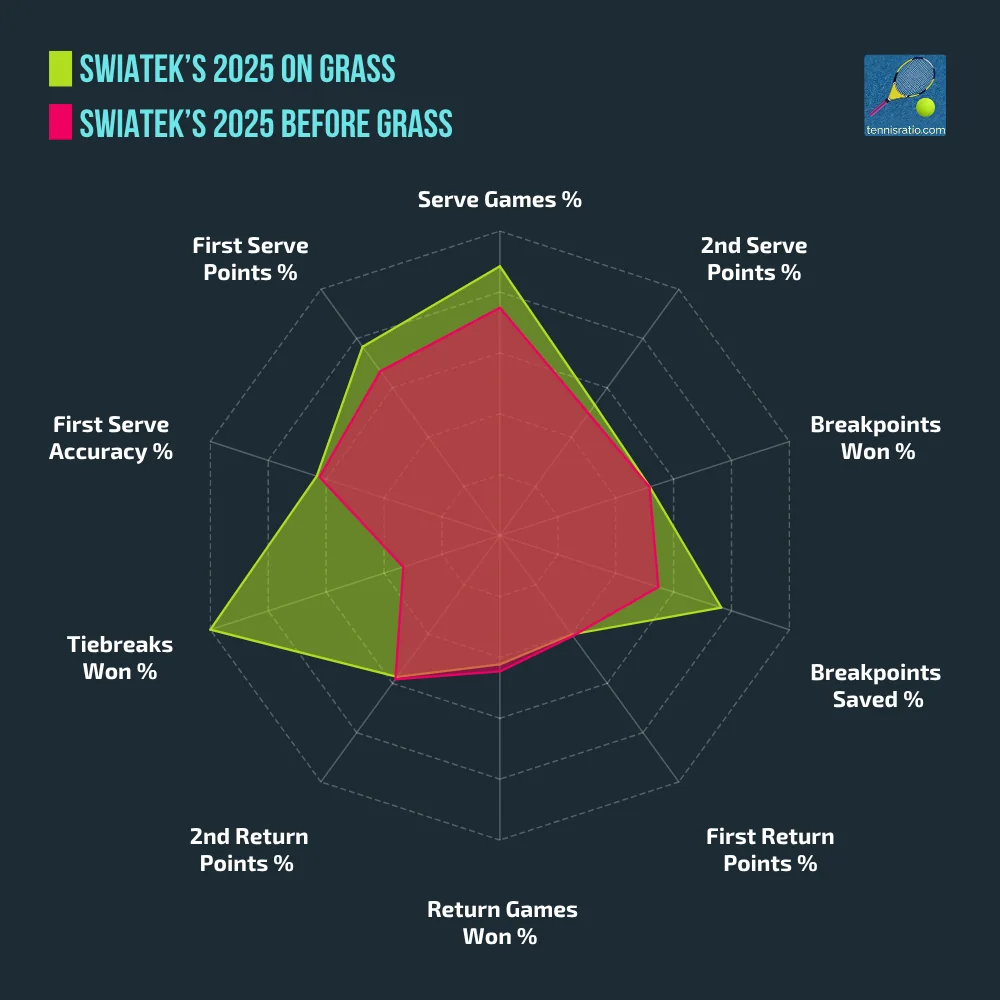
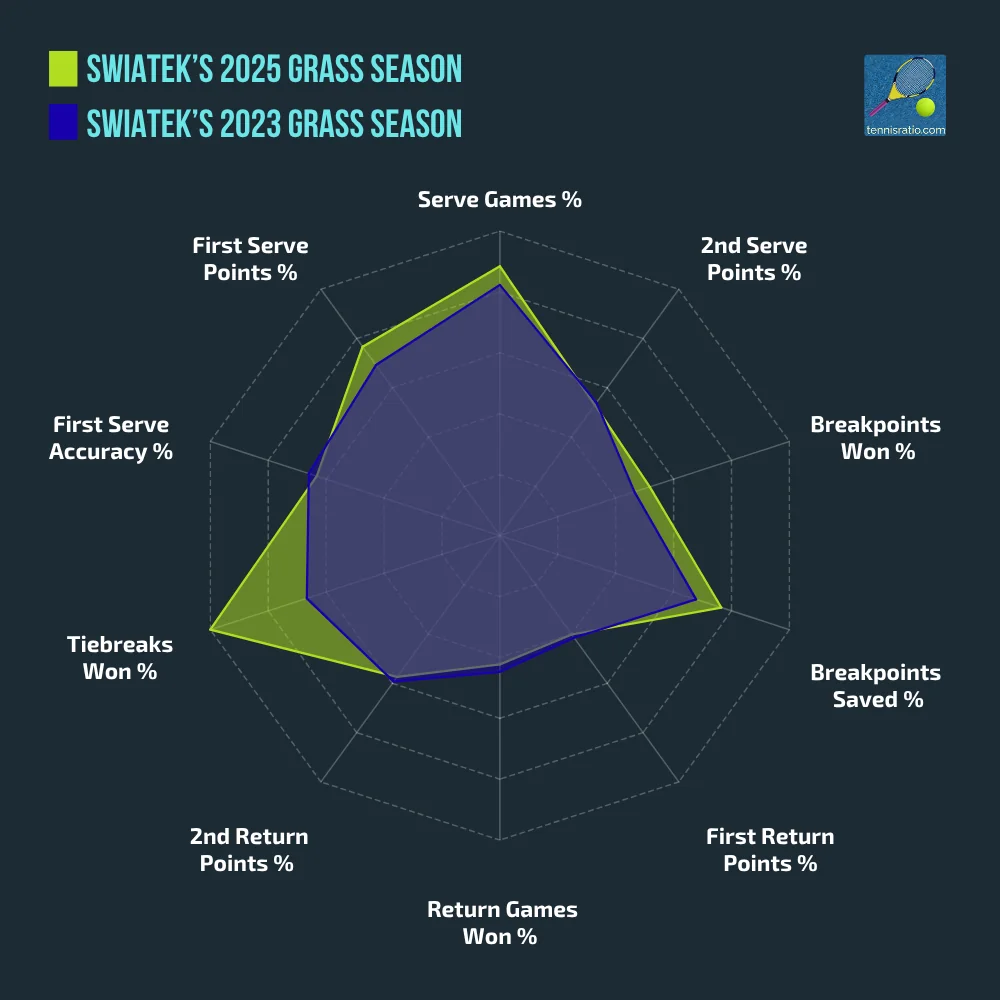
This improvement is also evident when comparing Swiatek’s performance on grass this year with the rest of her 2025 campaign. Compared to her previous best grass season two years ago, the serving stats show marked progress - demonstrating that her recent success was no coincidence.
Grass season 2025 full of upsets
The grass-court swing is short but intense, with several WTA 250 and 500 events played across the UK, Germany, and the Netherlands. This year’s grass season showcased some surprising and compelling storylines - many coming from unexpected players. As always, all eyes were on Wimbledon, and this edition delivered a flurry of upsets in the early rounds, shaking up the draw and reflecting the overall unpredictability of the grass campaign.
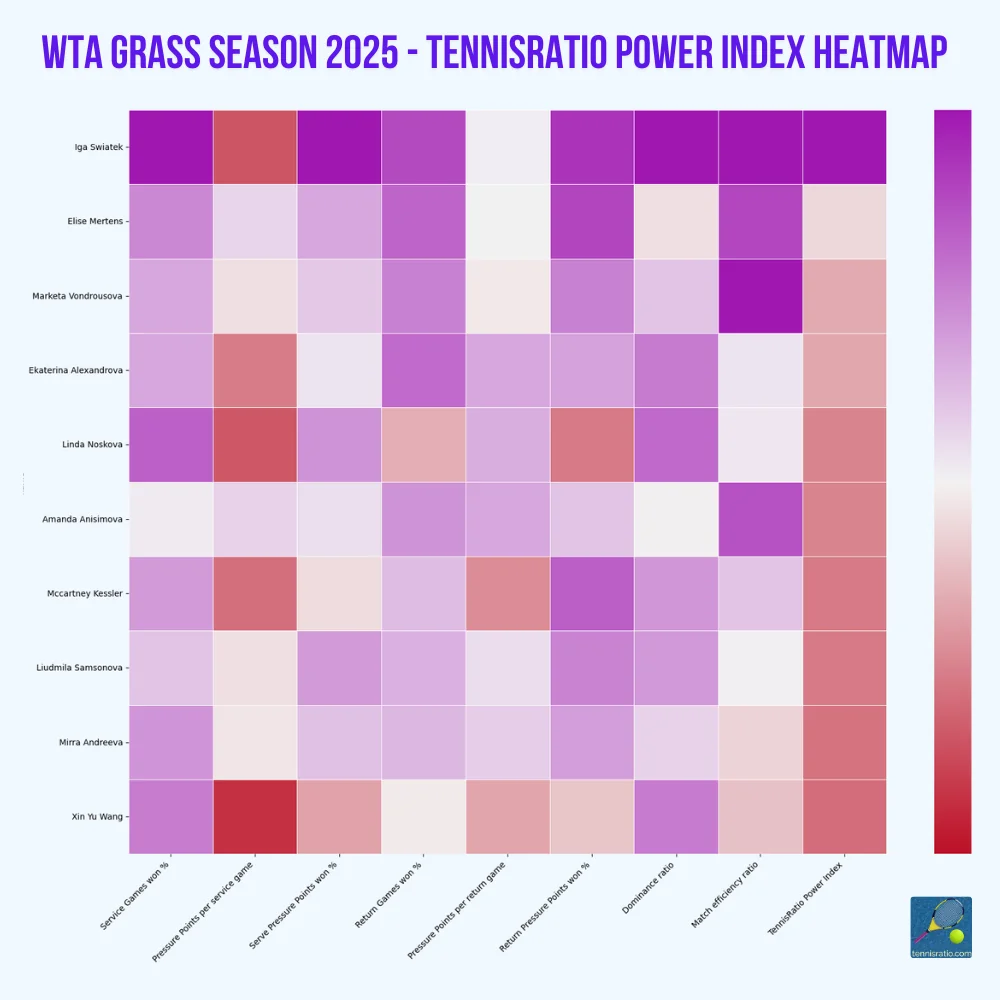
Elise Mertens won the traditional event in ’s-Hertogenbosch and followed it with a solid Wimbledon run, where she was stopped by world No. 1 Aryna Sabalenka in the Round of 16 after two competitive sets. Known for her consistency, the Belgian maintained steady form throughout the grass season - making her the second-best performer in this stretch according to the TennisRatio Power Index, especially amid the inconsistency of other top players. Marketa Vondrousova returned to contention after a long injury spell and won the WTA 500 in Berlin. Ekaterina Alexandrova also delivered a typically solid performance, with semifinal finishes in ’s-Hertogenbosch, quarterfinals in Bad Homburg, and reaching the fourth round at Wimbledon.
Amanda Anisimova had a brilliant grass season, reaching two finals in three events. A painful 0–6, 0–6 loss to Swiatek at Wimbledon certainly damaged her stats and lowered her Power Index ranking. She also came up short in the Queen’s Club final, losing to sensational 37-year-old champion Tatjana Maria. Nevertheless, two finals, a quarterfinal in Berlin, a win over the world No. 1 in a Grand Slam semifinal, and three top-10 wins helped Anisimova climb to a career-high No. 7 in the rankings - laying a solid foundation for her future.
The curse of the last week before a Grand Slam
Year after year, the story seems to repeat itself: players who win tournaments in the week directly before a Grand Slam - especially on grass - often struggle in the Slam itself. Jessica Pegula beat Swiatek in the WTA 250 Bad Homburg final, only to crash out of Wimbledon a few days later, losing to Elisabetta Cocciaretto in the first round.
Maya Joint’s victory at the WTA 500 Eastbourne was one of the grass season’s highlights - especially after she defeated fellow rising star Alexandra Eala in an epic final decided by a 12–10 tiebreak in the final set. Unfortunately for Joint, she had some bad luck in the Wimbledon draw, facing Liudmila Samsonova in the opening round and losing in straight sets.
